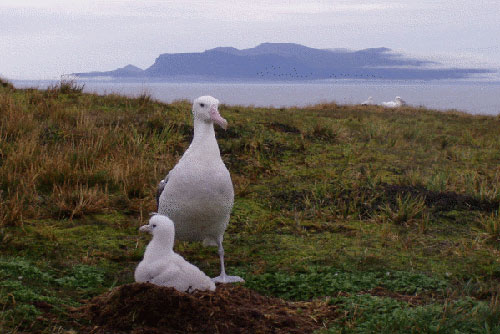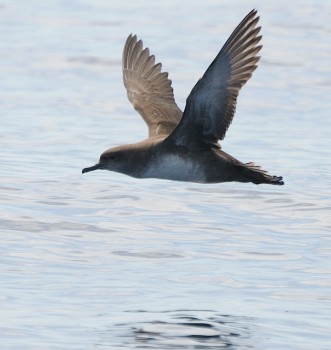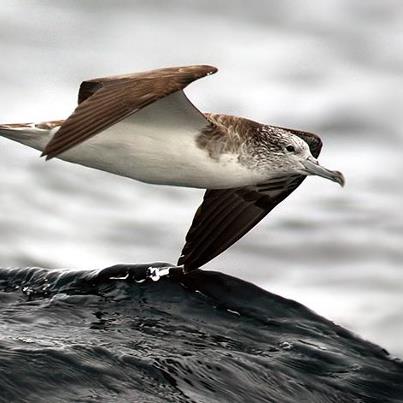I read Richard Cuthbert’s recently published book on the globally Endangered Hutton’s Shearwater Puffinus huttoni by head torch over two nights in field huts on New Zealand’s Great Barrier Island while tramping the Aotea Track last month after attending ACAP meetings in Wellington. Fitting, I think, as I was on the track to visit the mountain breeding site of another of the country’s endemic burrowing seabirds, the ACAP-listed and globally Vulnerable Black Petrel Procellaria parkinsoni on the upper slopes of Mount Hobson Hirikimata.
New Zealand works hard to look after its many seabird species. The Black Petrel has its champion, Elizabeth ‘Biz’ Bell of the consultancy Wildlife Management International who continues with her annual breeding studies when not eradicating invasive mammals on seabird islands around the world. Hutton’s Shearwater that breeds in mountains inland of Kaikoura on South Island has also had its champions, notably mountain climber Geoff Harrow QSM who discovered its then unknown breeding sites in the Seaward Kaikoura Mountain Range in 1964/65. Years later Geoff helped found the Hutton’s Shearwater Charitable Trust in 2008, of which he is now its patron. The trust rescues and releases fledglings downed by Kaikoura’s street lights and also monitors a fenced sanctuary known as Te Rae o Atiu close to sea level where hand-reared chicks translocated over the period 2005 to 2013 are now returning to breed safe from introduced predators.
In September 1996 English biology graduate Richard Cuthbert, along with a colleague, a field hut and supplies, is dropped off by helicopter in the Kowhai Valley in the Seaward Kaikoura Mountains to commence his PhD research on Hutton’s Shearwater. For three summer seasons Richard works out of the hut in the valley, helped by a number of field assistants, most importantly Erica Sommer, now his wife. Even Sir David Attenborough drops in for a filming visit! His PhD is awarded by the University of Otago in 1999 and a suite of eight peer-reviewed publications on Hutton’s Shearwater follows in peer-reviewed ornithological journals over the next four years.
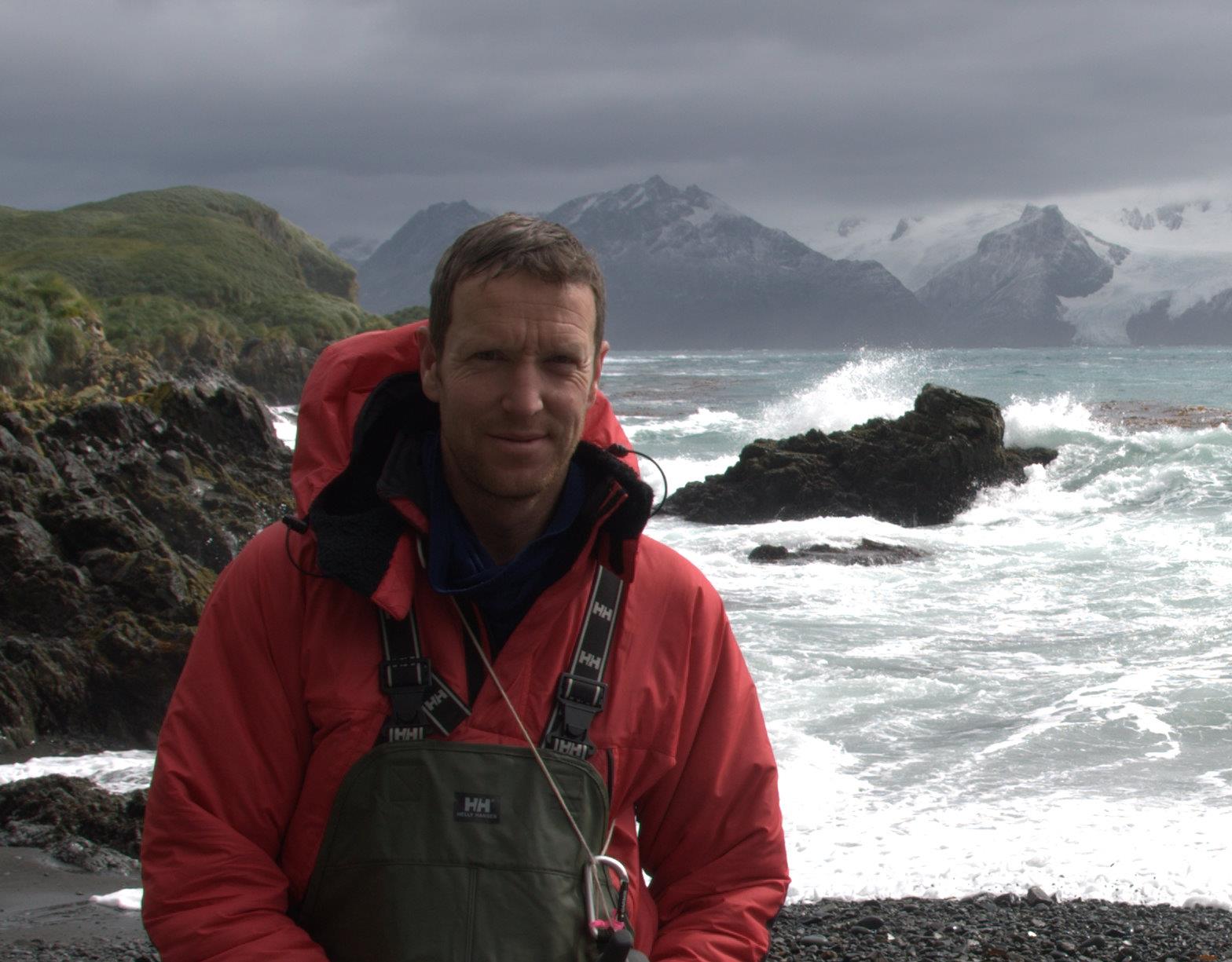
Richard Cuthbert in a favoured environment: a sub-Antarctic seabird island in the South Atlantic in 2012
Following their field work in New Zealand, Richard and Erica spend a year on Gough Island in the South Atlantic over 2000/01, studying its seabirds that are threatened by House Mice, and over a number of follow-up visits on annual relief voyages, the mice themselves. This essential work has led directly to the welcome (and long-awaited) announcement last month that Gough’s “killer” mice are to be eradicated in 2019 (click here). I have worked with Richard on Gough where I experienced his impressive hill-walking speed while climbing with (well, actually behind) him to a long-term study colony of the globally Critically Endangered Tristan Albatross Diomedea dabbenena in Gonydale - that I set up in 2006. This hill-walking ability was critical to his study of Hutton’s Shearwater, as becomes apparent as one reads his book, launched in September in Kaikoura as the shearwaters return to breed once more.
Seabirds beyond the Mountain Crest is, quite simply, a great read. The author skilfully interweaves the shearwater's known history since its first description and Harrow’s dedicated explorations with evocative accounts of his own field work. Starting with an account of the species’ discovery and naming (and clearing up some mysteries on the way), Richard Cuthbert goes on to describe his first arrival in the Kowhai Valley. Chapters describing field work in all weathers, with the odd climbing outing, follow. Information on the breeding biology of the shearwater is interspersed with encounters of other animals present in the valley. The inquisitive Kea, a mountain parrot is not always welcomed when trying to sleep in the field hut: “…the kea amused themselves by … galloping in unison from one end of the roof to the other…”.
Previously it had been mooted that introduced Stoats were causing low breeding success, loss of colonies and a shrinkage of the shearwater’s population. Richard with Erica’s assistance study the Stoats’ diet (by collecting and dissecting their scats) and movements by radio-tracking and convincingly show that it is not them but actually predation and habitat destruction by feral pigs that is the primary cause. His surveys find that colonies abandoned since their discovery in the 1960s by Geoff Harrow are all accessible to pigs, whereas the two remaining active colonies are not. As a consequence control of pig numbers has been undertaken by hunting and trapping near his study colony in the Kowhai Valley.
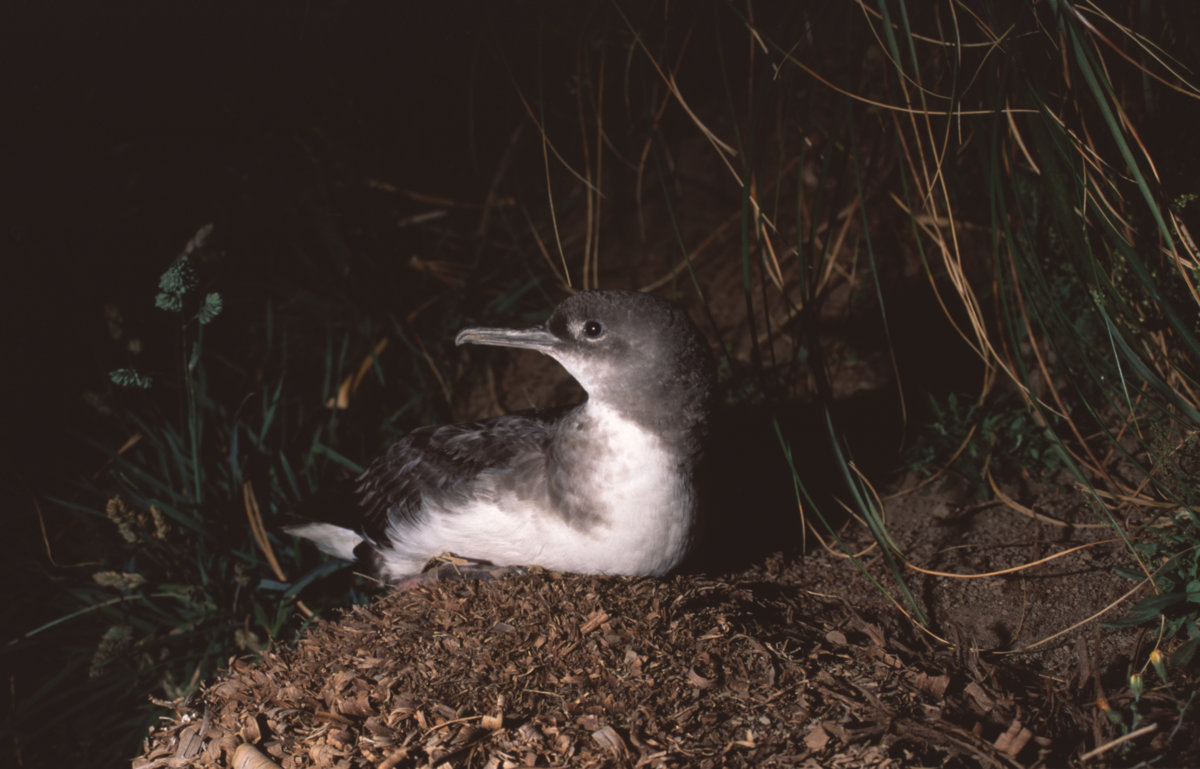
A Hutton's Shearwater at its mountain burrow entrance, photograph by Richard Cuthbert
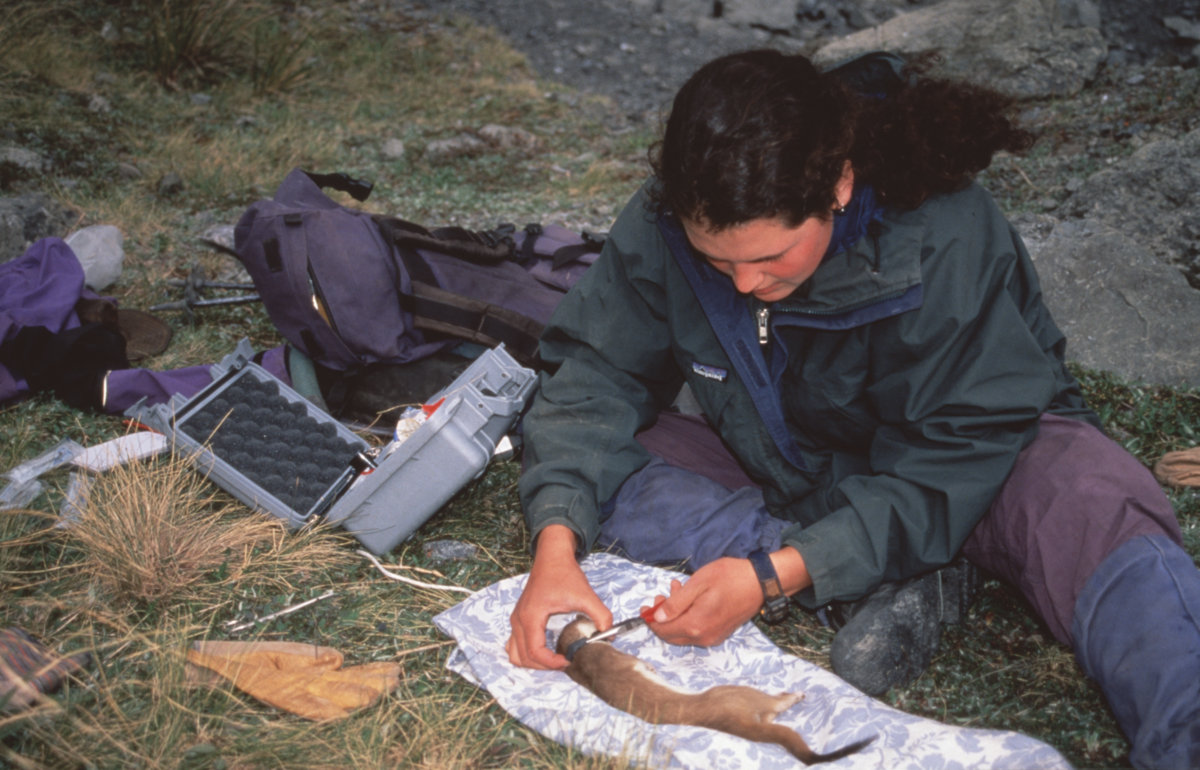
Erica Sommer fits a radio tag to a Stoat, photograph by Richard Cuthbert
The book is nicely set out with a number of half- and full-page colour photos. The science is well explained at the level of the informed layperson without the need for tables and graphs. As a long-term reviewer and editor of scientific works I was pleased to spot no typos from my torch-lit sleeping bag, so well done to the author and to Otago University Press.
Seabirds beyond the Mountain Crest ends with an account of the November 2016 earthquake centred on Kaikoura that has severely impacted at least one of the two mountain colonies (click here). It is not as yet known how many shearwaters that were then in their burrows were killed. Richard Cuthbert writes that he is planning to return to Kaikoura in December to help investigate the situation at the breeding sites. Let’s hope the news is not all bad, and the shearwater he studied and now has written about so engagingly continues to survive in its mountain haunts.
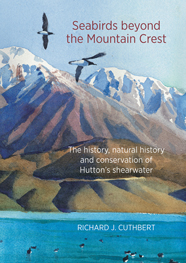
Book cover from a painting by Austen Deans
With thanks to Richard Cuthbert and Victor Billot of Otago University Press.
Reference:
Cuthbert, R.J. 2017. Seabirds beyond the Mountain Crest. The History, Natural History and Conservation of Hutton’s Shearwater. Dunedin: Otago University Press. 212 pp. Paperback. 240 x 170 mm. ISBN 978-0-947522-64-3. NZ$ 45. www.otago.ac.nz/press.
John Cooper, ACAP Information Officer, 05 October 2017
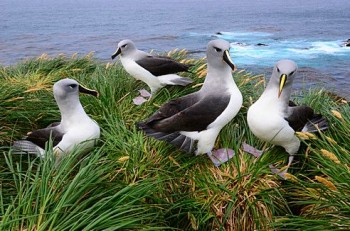

 English
English  Français
Français  Español
Español 